 Facebook
Facebook
 X
X
 Instagram
Instagram
 TikTok
TikTok
 Youtube
Youtube
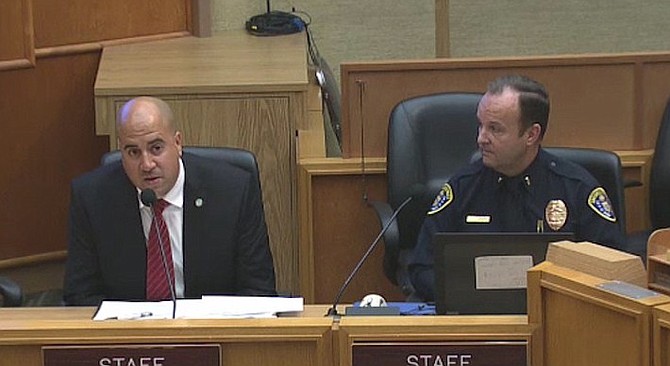
On April 10, the city council voted to change an ordinance regarding alarm system fees and penalties. SDPD Lt. Kevin Mayer told the city council that three key things had driven the changes. First was the passing of Prop 26 in 2010 (also known as the “No Hidden Taxes” initiative). Though Mayer said that the ordinance is exempt from Prop 26 because it’s a reasonable regulatory cost for the administration of the permit and the fines and penalties are in the name of gaining compliance.
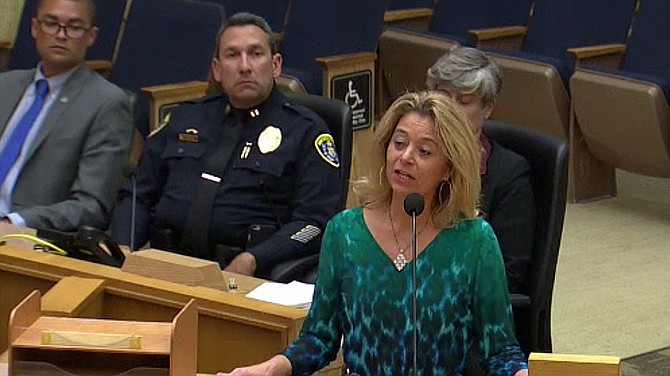
Mayer said the second and third things that drove the revision were the 2011 Grand Jury report titled “No Cost for Alarm” and the subsequent 2011 city’s performance audit of the police department’s permits and licensing unit.
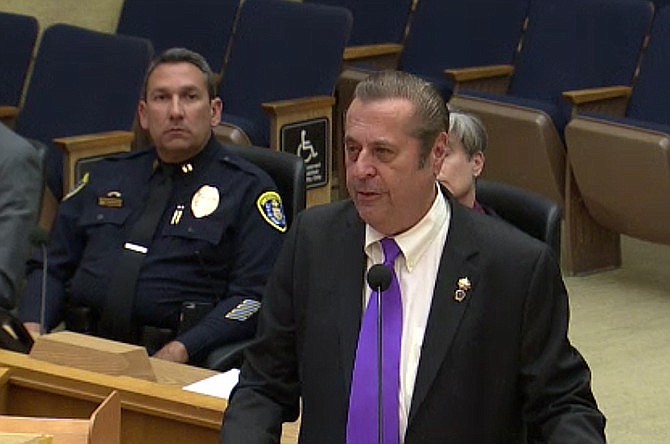
The biggest changes alarm users may notice will be that new permits will expire annually instead of every other year. Also, the initial cost of a permit will now be $10 a year versus the current $100.25 for residential alarms and $173.25 for business customers (for two years). The biggest change will be in the penalties for false alarms. As it is now, every permit holder gets five false alarms annually without any penalty included in their permit cost. Starting July 1, this changes to $100 for the first false alarm and incrementally increases to $500 for five to seven false alarms.
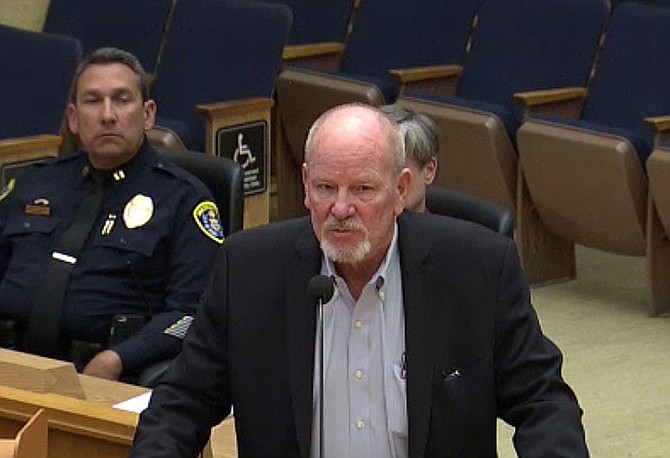
The ordinance also mandates that alarm companies call the end-user twice before dispatching the police. Mayer said this alone is estimated to reduce law enforcement responding to false alarms by at least 70 percent.
“There’s a built-in appeal process for those that feel that the penalties for fees were misappropriated or levied against them falsely.”
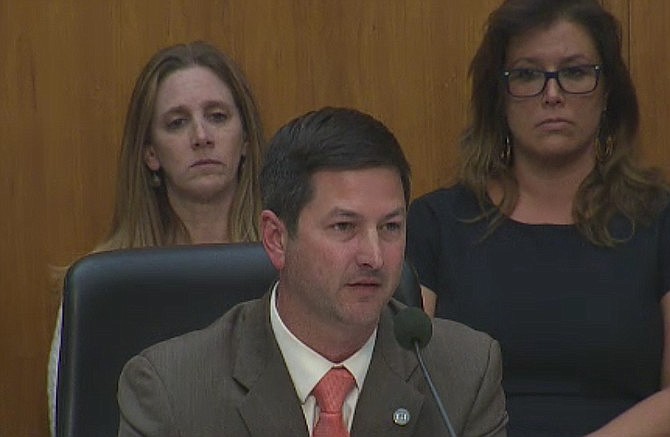
According to Mayer, the proposed changes are estimated to generate $1 million versus the $2.7 million currently generated. Kyle Meaux, program manager for SDPD administrative services said that the department spends approximately 20,000 hours a year responding to false alarms, which is a cost of close to $2 million.
There were five public speakers at the hearing, all in favor of the new ordinance and most of them from the alarm industry.
One of them was Cathy Rempel who said she has worked on this issue for seven years. “We have a best practice here that is truly getting to those that need to learn."
Jon Sargent with Security Industry Alarm Coalition said that when changes like what are proposed have gone into place in other cities that false alarms have dropped dramatically. He also speculated that with a population of about 1.3 million, the estimated 40,000 local alarm permits will probably double once everybody gets on board.
Sargent may be on to something what with the penalty for having no permit more than doubling from $146.75 to $300. Also, the same false alarm penalties apply to those without a permit.
Councilmember Chris Cate asked Meaux about the breakdown of false alarms. Meaux didn’t have that with him as far as residential versus commercial false alarms, but did say that there are more residential permits.
Cate also asked about how the enhanced call verification would work. Ronald Walters with the Security Industry Alarm Coalition said that roughly 77 percent of all of residential alarms are caused by user error. With the population of cell phones, he said the second call verification has been very successful with residential customers. However, it’s been less successful on the commercial side.
Walters used the example of a large box retailer that has 1000 outlets nationwide. He said that if you give that retailer’s security director the choice to get two calls or to dispatch the police immediately, the answer is usually to dispatch immediately. He said the ordinance makes the two call verification mandatory.
Councilmember Chris Ward said he was concerned about a constituent getting a call away from home and having to decide if they were risking a $100 fine by sending the police to their home.
While Cate supported the motion, Councilmembers Chris Ward, Laurie Zapf, and David Alvarez did not. They all wanted to see an ordinance that had one non-penalty false alarm per year.
While Alvarez listened to Ward and Zapf, he did the math and pointed out to Mayer that a residential alarm holder now pays $50 bucks a year for a permit that comes with five free false alarms a year. “You are suggesting, and for a moment convinced me actually, that with the [reduction] in the annual fee, I’m essentially paying the same. Except that’s not that case.” He said while the yearly fee is only $10, after just one false alarm, it will cost $100, what permit users are now paying for two years, which also includes no charge for five false alarms.
Alvarez requested an amendment that would have one free false alarm annually.
Councilmember Barbara Bry responded by reminding everyone that the proposal had been vetted for eight years and freeing up police resources was of paramount concern.
Alvarez’s amendment failed 3-6. The vote for the new ordinance passed 6-3 with the minority being Ward, Zapf, and Alvarez.


On April 10, the city council voted to change an ordinance regarding alarm system fees and penalties. SDPD Lt. Kevin Mayer told the city council that three key things had driven the changes. First was the passing of Prop 26 in 2010 (also known as the “No Hidden Taxes” initiative). Though Mayer said that the ordinance is exempt from Prop 26 because it’s a reasonable regulatory cost for the administration of the permit and the fines and penalties are in the name of gaining compliance.

Mayer said the second and third things that drove the revision were the 2011 Grand Jury report titled “No Cost for Alarm” and the subsequent 2011 city’s performance audit of the police department’s permits and licensing unit.

The biggest changes alarm users may notice will be that new permits will expire annually instead of every other year. Also, the initial cost of a permit will now be $10 a year versus the current $100.25 for residential alarms and $173.25 for business customers (for two years). The biggest change will be in the penalties for false alarms. As it is now, every permit holder gets five false alarms annually without any penalty included in their permit cost. Starting July 1, this changes to $100 for the first false alarm and incrementally increases to $500 for five to seven false alarms.

The ordinance also mandates that alarm companies call the end-user twice before dispatching the police. Mayer said this alone is estimated to reduce law enforcement responding to false alarms by at least 70 percent.
“There’s a built-in appeal process for those that feel that the penalties for fees were misappropriated or levied against them falsely.”

According to Mayer, the proposed changes are estimated to generate $1 million versus the $2.7 million currently generated. Kyle Meaux, program manager for SDPD administrative services said that the department spends approximately 20,000 hours a year responding to false alarms, which is a cost of close to $2 million.
There were five public speakers at the hearing, all in favor of the new ordinance and most of them from the alarm industry.
One of them was Cathy Rempel who said she has worked on this issue for seven years. “We have a best practice here that is truly getting to those that need to learn."
Jon Sargent with Security Industry Alarm Coalition said that when changes like what are proposed have gone into place in other cities that false alarms have dropped dramatically. He also speculated that with a population of about 1.3 million, the estimated 40,000 local alarm permits will probably double once everybody gets on board.
Sargent may be on to something what with the penalty for having no permit more than doubling from $146.75 to $300. Also, the same false alarm penalties apply to those without a permit.
Councilmember Chris Cate asked Meaux about the breakdown of false alarms. Meaux didn’t have that with him as far as residential versus commercial false alarms, but did say that there are more residential permits.
Cate also asked about how the enhanced call verification would work. Ronald Walters with the Security Industry Alarm Coalition said that roughly 77 percent of all of residential alarms are caused by user error. With the population of cell phones, he said the second call verification has been very successful with residential customers. However, it’s been less successful on the commercial side.
Walters used the example of a large box retailer that has 1000 outlets nationwide. He said that if you give that retailer’s security director the choice to get two calls or to dispatch the police immediately, the answer is usually to dispatch immediately. He said the ordinance makes the two call verification mandatory.
Councilmember Chris Ward said he was concerned about a constituent getting a call away from home and having to decide if they were risking a $100 fine by sending the police to their home.
While Cate supported the motion, Councilmembers Chris Ward, Laurie Zapf, and David Alvarez did not. They all wanted to see an ordinance that had one non-penalty false alarm per year.
While Alvarez listened to Ward and Zapf, he did the math and pointed out to Mayer that a residential alarm holder now pays $50 bucks a year for a permit that comes with five free false alarms a year. “You are suggesting, and for a moment convinced me actually, that with the [reduction] in the annual fee, I’m essentially paying the same. Except that’s not that case.” He said while the yearly fee is only $10, after just one false alarm, it will cost $100, what permit users are now paying for two years, which also includes no charge for five false alarms.
Alvarez requested an amendment that would have one free false alarm annually.
Councilmember Barbara Bry responded by reminding everyone that the proposal had been vetted for eight years and freeing up police resources was of paramount concern.
Alvarez’s amendment failed 3-6. The vote for the new ordinance passed 6-3 with the minority being Ward, Zapf, and Alvarez.
Comments